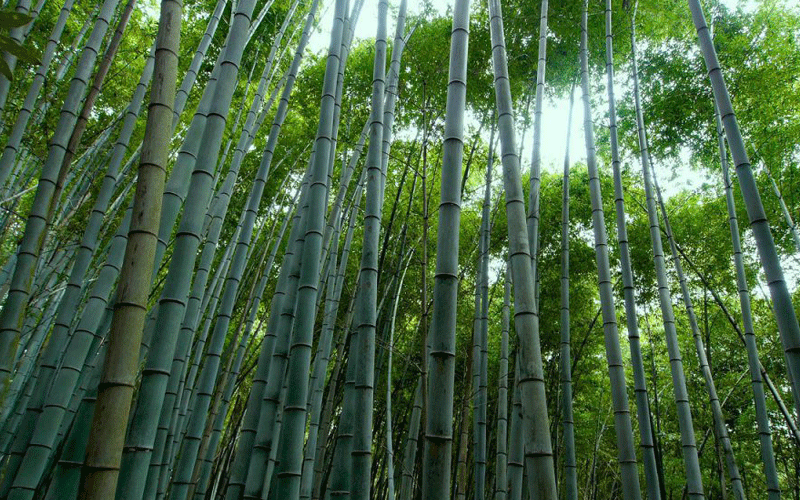Why bamboo is becoming a viable alternative wood

Mwangi Mumero
With the rampant deforestation experienced in Kenya in recent years leading to rise in the cost of timber products, bamboo is becoming a viable alternative.
Projections from the Kenya Forest Service (KFS) indicate that demand for wood products is set to increase rapidly by 2032.
Poles are likely to witness the fastest growth at 58.2 per cent, building timber (43.2 per cent), firewood (16.1 per cent) and charcoal at 17.8 per cent.
Currently, KFS estimates a wood supply potential of 31.4 million square metres against a demand of 41.7 million square metres.
Data from the World Bank indicates that Kenya currently has a forest cover of 7.8 per cent, representing a total of 44,130 square kilometres.
The national forest levels are below the internationally recommended 10 per cent. The nation traditionally relies on Eucalyptus, cypress, cider and grevillea trees as the primary sources of wood.
Lighter than traditional wood, bamboo, according to researchers, is five times durable with additional benefits.
From scaffolding to construction materials, bamboo is proving vital in building and construction. It grows three times faster than eucalyptus and it conserves water.
Timber products
Eucalyptus, also known as Blue Gum, is a primary source of timber products in East Africa but is said to guzzle huge amounts of water leading to drying of rivers and wet lands. Bamboo matures faster between four and seven years compared to other trees that take over 15 years.
Researchers add that due to its light weight, high elasticity and great resistant to breakage, bamboo is ideal for numerous construction uses and is suitable for buildings in earthquake prone areas.
An architect with Kenya’s National Construction Authority Essendi Sylvia says bamboo can be used in any part of the building, be it the structure or the normal architectural elements like the walls.
Modern bamboo construction is classified as substitutive and conventional.
Substitutive involves the replacement of all other construction materials in construction.
Conventional is the use of bamboo without varying much of its traditional use for instance using bamboo for column construction with few improvement like bolting.
Overall, bamboo is currently being used in structural uses that include columns, beams, roof, trusses and scaffolding. In roofing, bamboo is used a thatch or split bamboo tiles.
It is also currently used in flooring, ceiling finishes, windows and doors. “It is cheaper than steel and concrete, yet equally strong. When well treated, it is durable,” says Essendi.
Farming of bamboo as an industrial crop, due to its rising demand as a construction material and as an alternative to traditional timber is on an upward trend.
Degraded areas have also become new sources of bamboo wood after rehabilitation.
“Bamboo can directly contribute to economic and social pillars by focusing on small and medium enterprises development to promote manufacturing, rehabilitation of degraded land and landscapes,” observed Dr Joram Kagombe, a regional director Kenya Forest Research Institute (Kefri).
However, to attain a bigger output, more land should be put under bamboo to increase yield and reduce importation of bamboo products.
Currently, Kenya imports bamboo products such as flooring tiles, plywood and furniture to meet rising demand.
Over 60 per cent of bamboo products are currently imported from China and the Far East nations—a trend that researchers believe can be reversed with large-scale production of bamboo.
At subsistence level, bamboo products made in Kenya include chairs, couches, tables, pen and bill holder, TV stands and baskets.
“With improved bamboo output and its manufactured products, the country will improve on its balance of trade with other countries currently exporting their products to Kenya,” said Kagombe.
Globally, about 1.5 billion people depend on bamboo, with an annual production and consumption of 20 million tonnes.
There are over 10,000 documented bamboo products cutting across subsistence use products, timber substitutes, fibre and textile, plastic composites, food and beverage, energy, health and cosmetic industry products.
International trade
In 2016, global bamboo total production and consumption were valued at $60 billion, with an international trade of about $2.5 billion per annum.
Buoyed by the big potential of bamboo farming, Kenya has developed a new policy aimed at harnessing the crop.
Overall, the ‘Bamboo Policy 2019’ aims at developing a vibrant bamboo industry to enable commericalisation and value addition, production of quality planting materials and increase acreage of government plantations, public spaces and private land.
The government will develop standards and certification mechanisms for products by bamboo-producing SMEs and industries.
Recently, the Kenya Forest Research Institute has identified fast growing bamboo varieties that can support paper mills and small cortege industries after a 30-year research.











